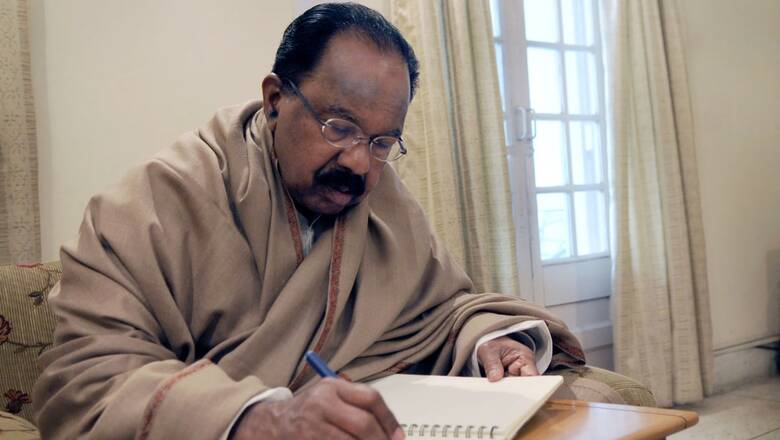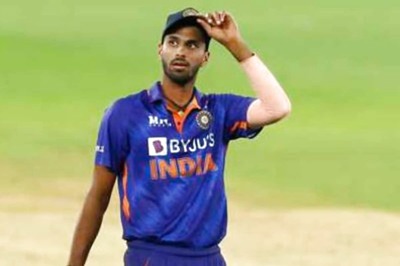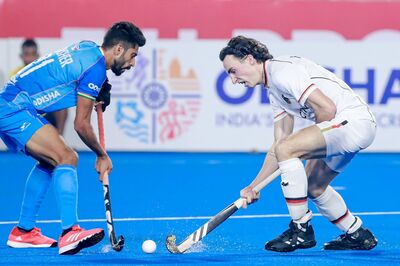
views
Former Union minister and senior Congressman Veerappa Moily believes that the Indian Constitution is the perfect template to achieve ‘Ram Rajya’ in the country. It is this modernistic take on Lord Ram’s governance of Ayodhya that he has portrayed in his two-part poem called Sri Ramayana Mahanveshanam.
Moily, who is also an accomplished author, has penned the poem in Kannada’s classical 20-beat meter. The poem explores the Ramayana as an embodiment of democracy; a classless, borderless, secular world.
Speaking to News18, Moily shed light on his contemporary view of the Ramayana and whether he thinks today’s India reflects ‘Ram Rajya’.
Edited excerpts:
You have expressed a modernistic take on Ramayana in which you speak of ‘Rama Tatvam’ and ‘Ram Rajya’ as well. How different is your take on the Ramayana?
It is a unique take. You compare Valmiki with Homer’s Iliad. Iliad is a story of anger, but here it is a story of love, of compassion, and humanitarianism. It is from that fountain that I took out the nectar and wrote my epic poem Sri Ramayana Anveshanam. I originally wrote it in Kannada and it consists of 43,000 lines; it is an epic poem with vast dimensions.
Rama would go on a conquest, but unlike other kings in any part of the world who were bothered about conquest, about acquisition and annexing land for their kingdom. For others, it was aggression and greed. Rama conquered people with love; he conquered their hearts. His was a borderless conquest.
In Panchavati, with Sita and Lakshamana… they educated and empowered people. The same is what you see in Kishkinda. He conquered Sugreeva and Vali’s hearts, not them. In Lanka, he did not annex it. That is why Chakravarthy Rama is supreme and a man of love and humanity, the unique story that I have depicted in my pieces. After the conquest of Ravana in my epic poem, Rama allows Indrajeet’s son to be crowned, unlike Valmiki’s version where Vibhishana was crowned. He could have taken over that territory; he did not.
There cannot be an India without Rama. That is the kind of spiritual relationship he has with India.
You have written the Sri Ramayana Anveshanam in a modern world, in modern India. How do you interpret from the Ramayana people know? Have you spoken about democracy, about governance?
For 14 years, who ruled Ayodhya? It was not Rama. Not Bharata as he left Ayodhya for tapasya. The question remains who ruled the kingdom? It was the people themselves who ruled it uninterrupted and with good governance. This is democracy. That means governance can take care of itself, and there need not be a ruler. People themselves can take over governance; there would be no need for any external forces. That is what I have tried to depict in my epic poems. That is called ‘Ram Rajya’.
‘Ram Rajya’ is not being ruled by Rama or Dasharatha; ‘Ram Rajya’ is rule by the people themselves. That is the foundation of democracy laid by Rama.
Can we have that kind of ‘Ram Rajya’ today in India?
The Constitution of India depicts ‘Ram Rajya’. If everybody goes by governance, by the rules of the Constitution in India, that in itself is ‘Ram Rajya’. It does not speak of a perpetual rule by a party or a ruler. You do not require that; what you need is the empowerment of people, which Rama has shown and done. I also show the dharma of a chakravarthy (king) in my poem.
In view of the upcoming Lok Sabha elections, do you think the India today is reflective of ‘Ram Rajya’ or is it a different kind of governance?
The rulers have no right to acquire power for themselves. They must give more power to the people. This is the decentralization process. Giving power to the panchayats, the corporations, municipalities. All these processes are done; the Constitution has provided for it and has empowered the authorities, and it should continue. If you conform to the Constitution of India as it is amended today, we can go back to ‘Ram Rajya’. Governance should not be a casualty. Elections like the Lok Sabha, Assembly, government, corporations, panchayats are all apparatuses, not the delivery of governance. The last man in society should feel that he is ruling; unless that feeling comes, I don’t think there is real democracy.
Is today’s India ‘Ram Rajya’?
You can never call it so. You find that it is not happening. There is corruption, misgovernance, every elected person thinks he is a ruler in himself; this is not the concept of real governance as envisaged in ‘Ram Rajya’. If people do not feel empowered at the grassroots, you have not reached that level of ‘Ram Rajya’.

















Comments
0 comment